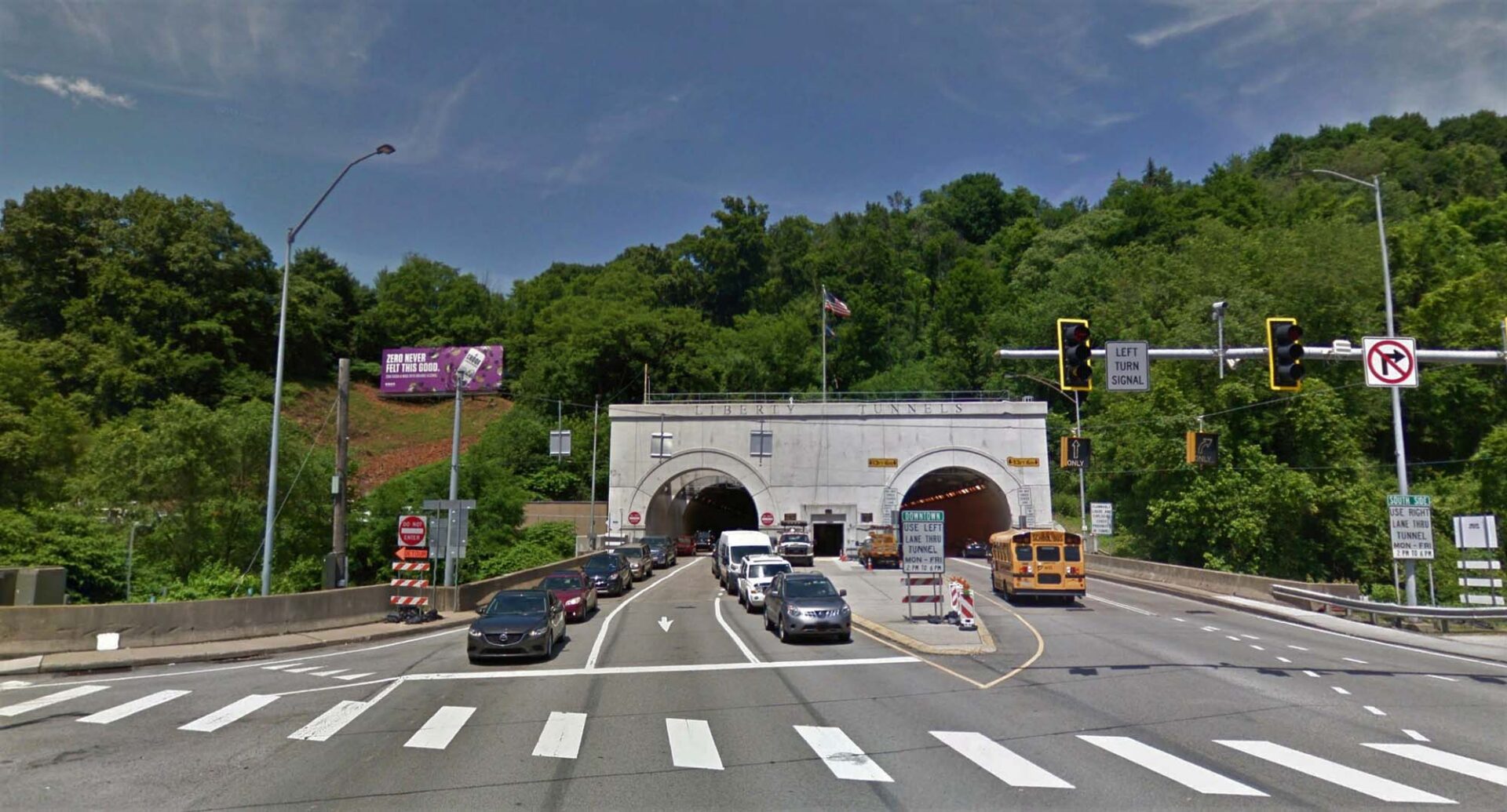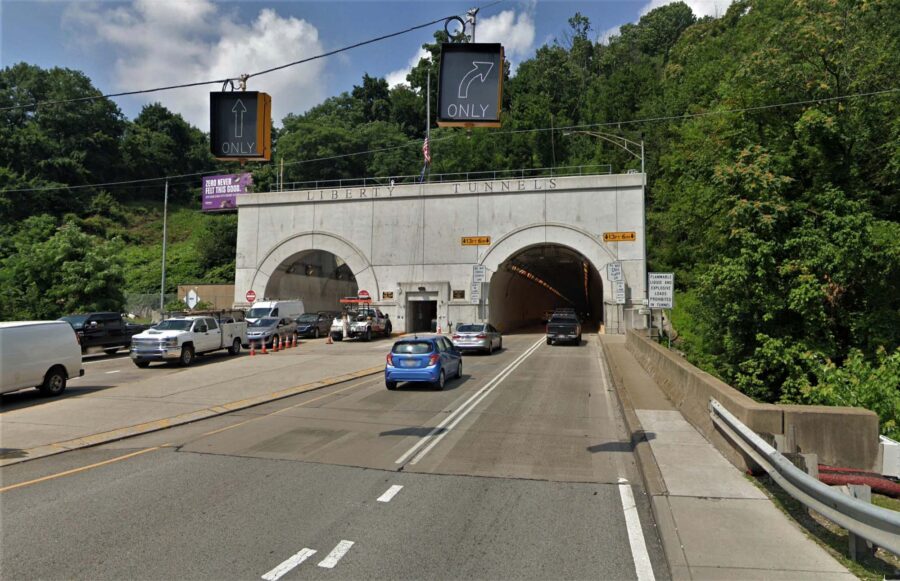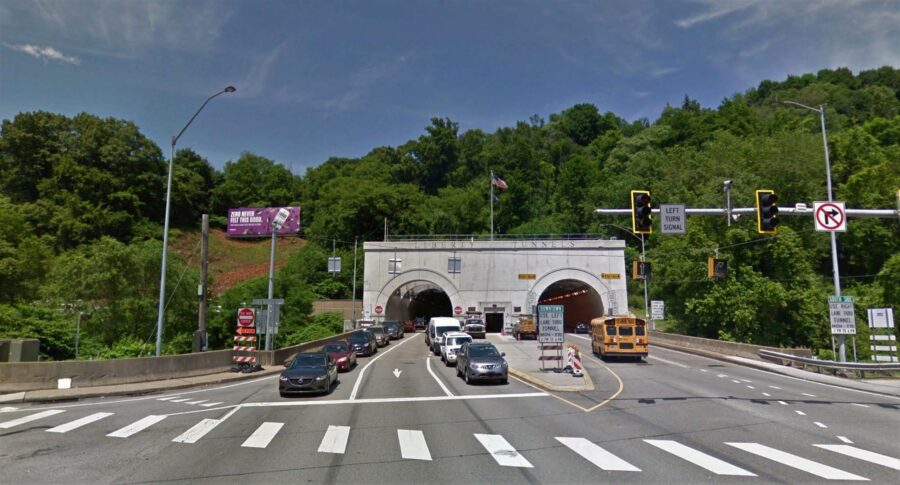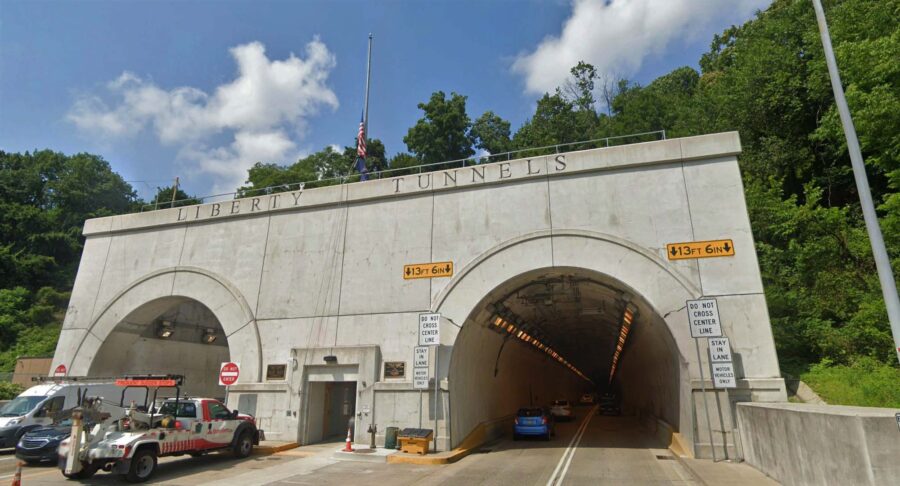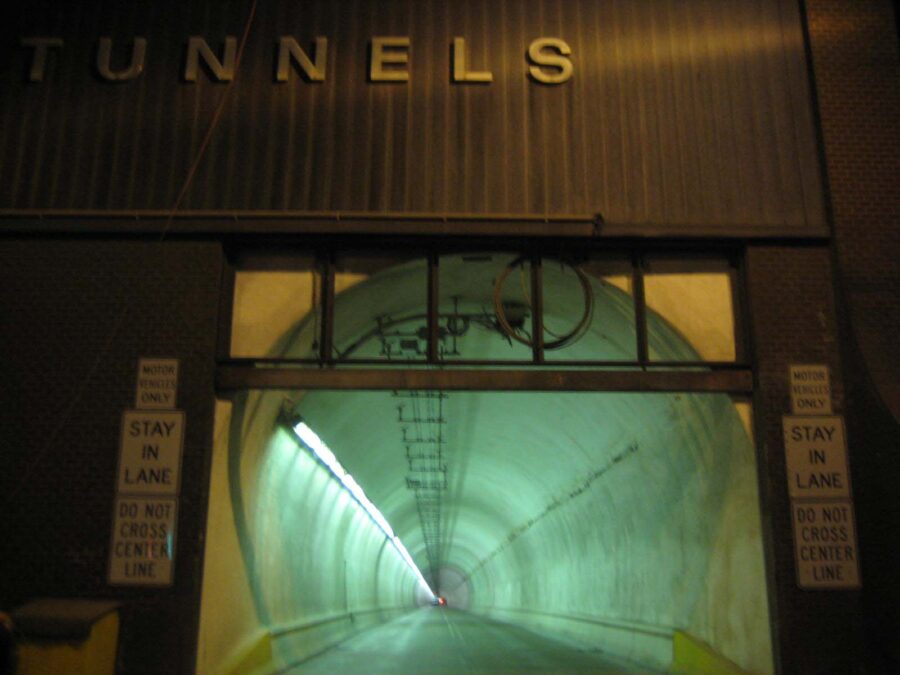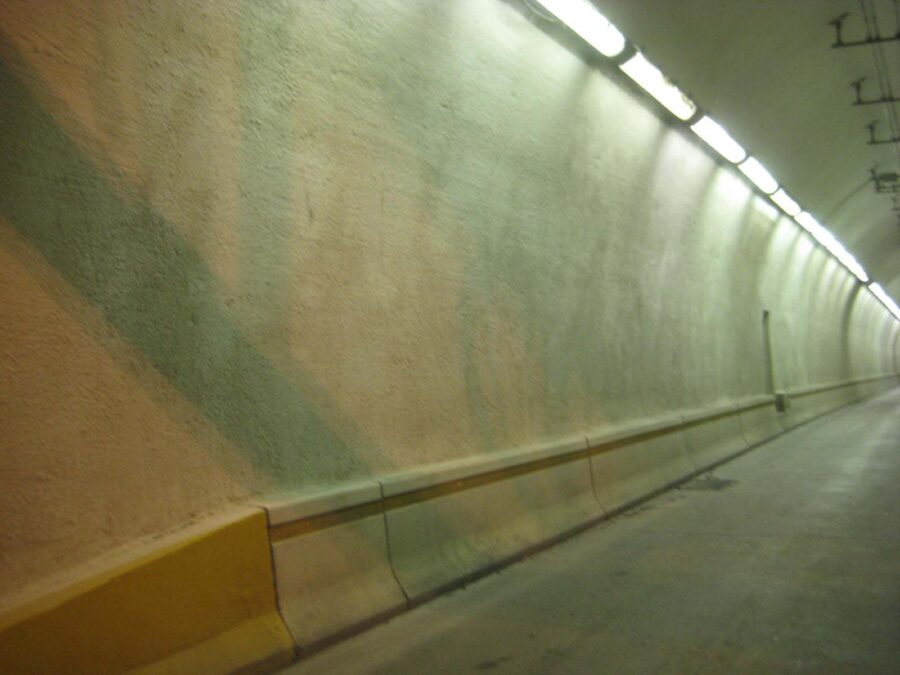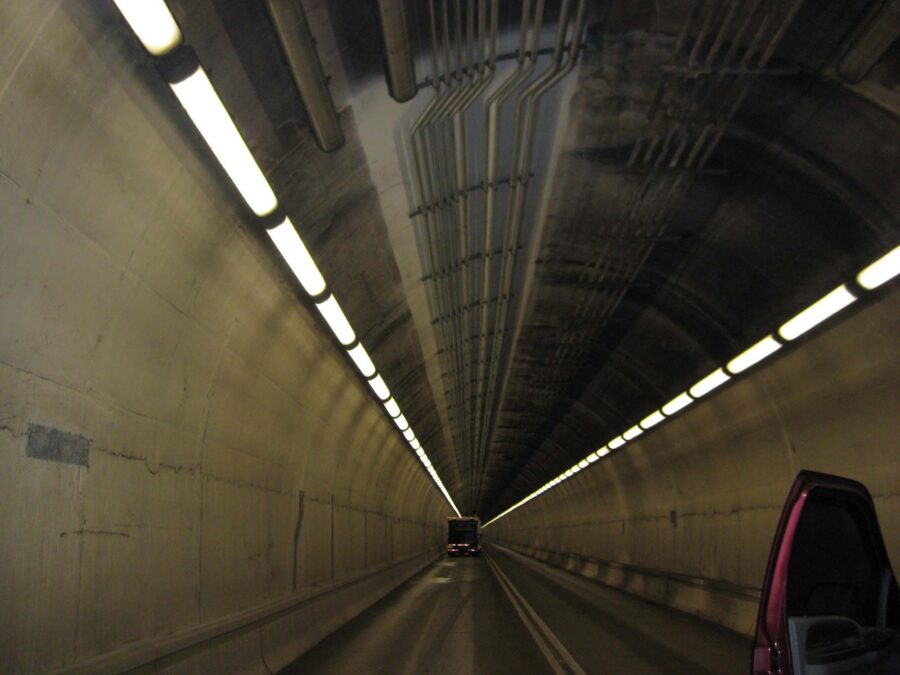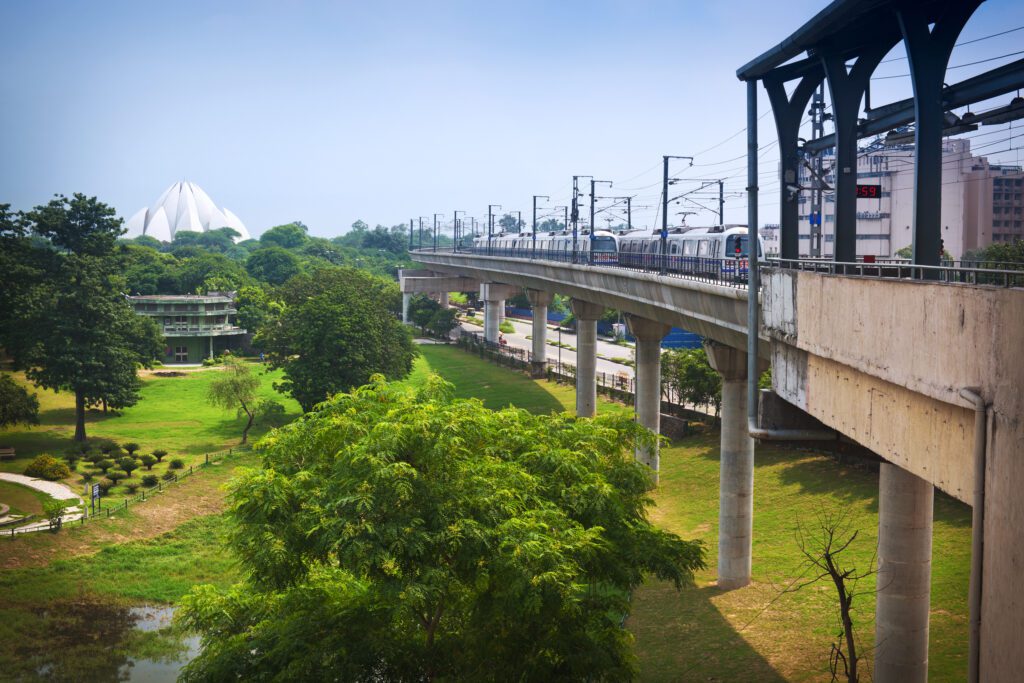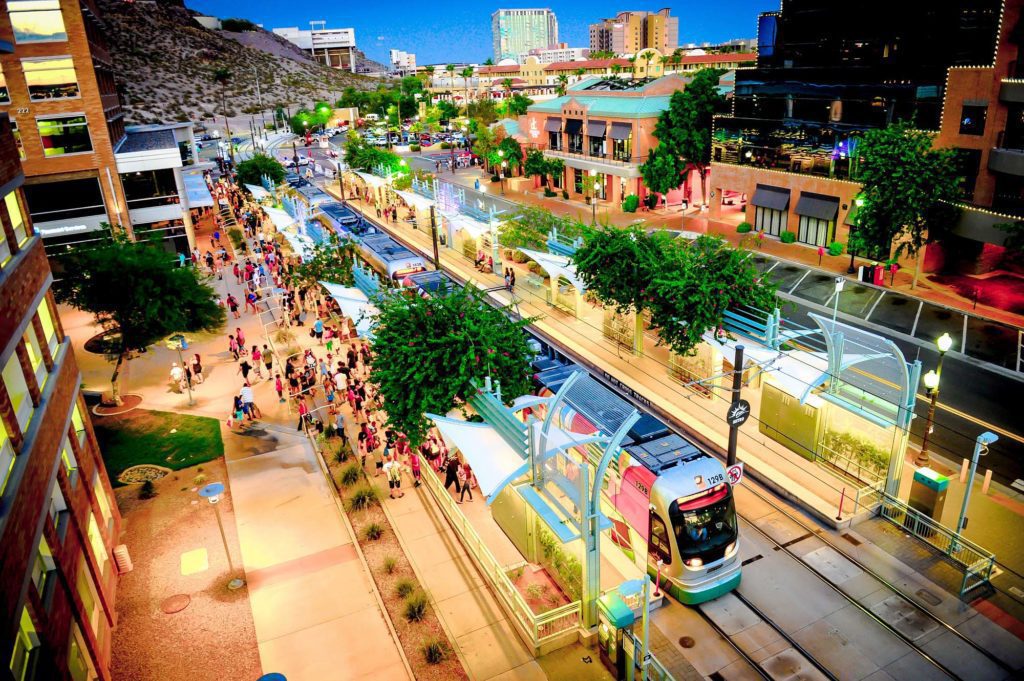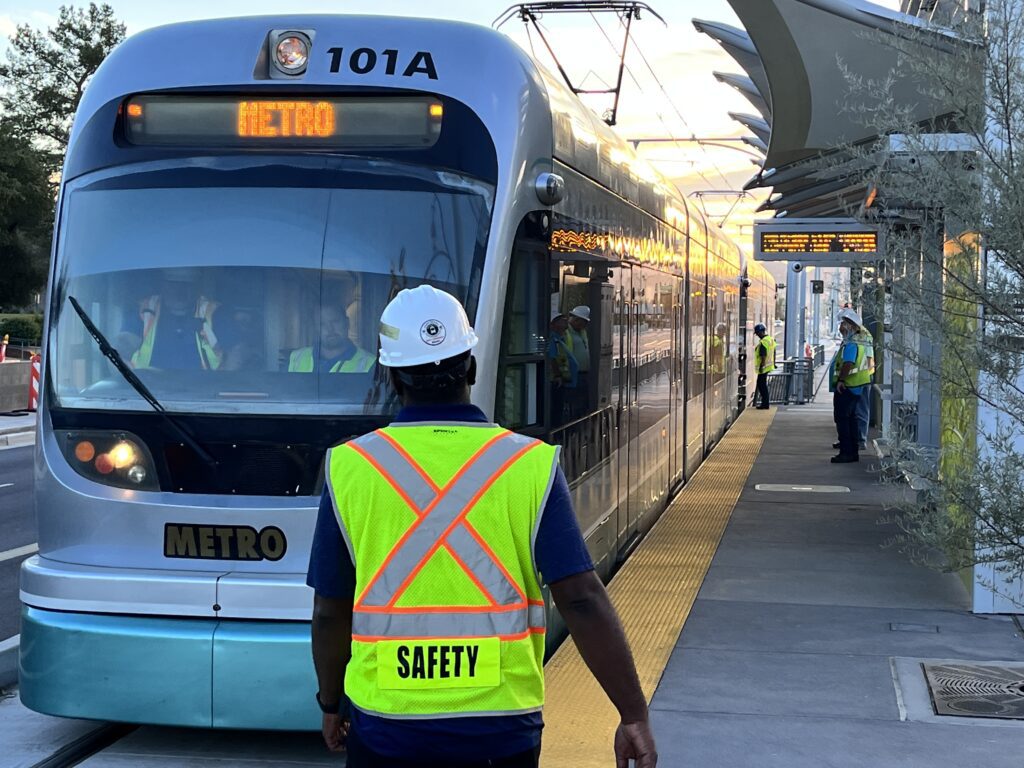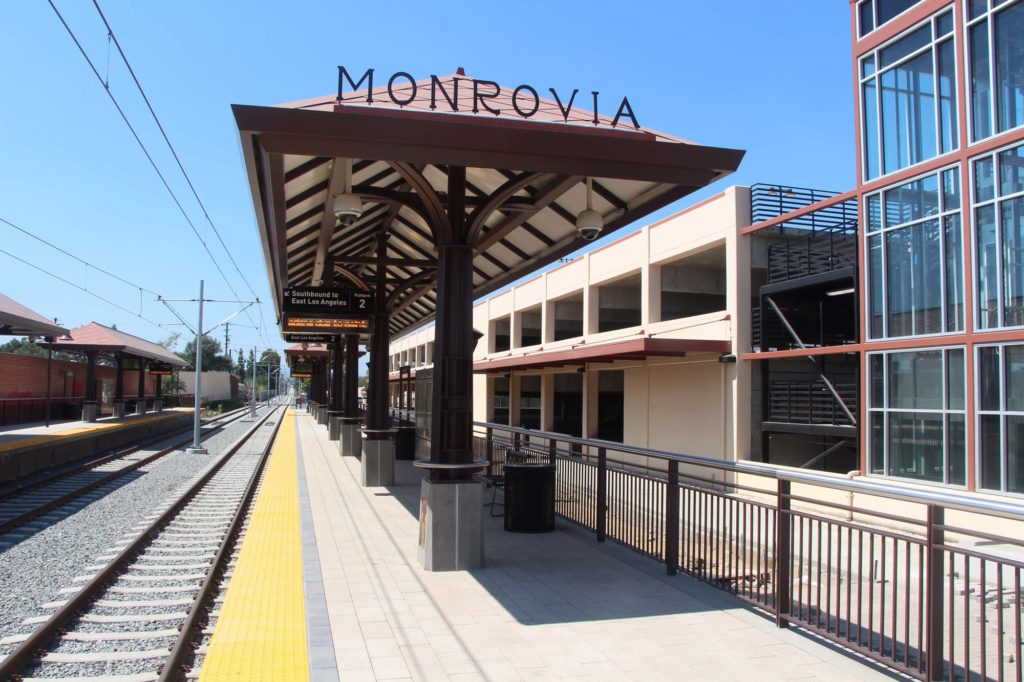Hill is providing supplementary construction inspection staff and office support services for the Liberty Tunnels Rehabilitation near Pittsburgh, PA. The Liberty Tunnels were completed in 1922 and are used to provide improved automobile access to the City of Pittsburgh from the South Hills. The tunnels have a length of nearly 6,000 LF, a vertical clearance of nearly 15 feet, and a width of more than 28 feet.
The most unusual feature of the tunnels is the ventilation shafts. The tunnels were first constructed with no ventilation shafts due to the limited amount of traffic traveling through. As the number of automobiles using the tunnels increased, the amount of carbon dioxide gas emitted became dangerously high. The solution to this problem was the creation of 2 pairs of 200 foot vertical ventilation shafts which continuously pump clean air into the tunnels. The ventilation shafts are controlled by a mechanical plant located on the top of Mount Washington. The tunnel engineers worked alongside the U.S. Bureau of Mines to design these ventilation shafts, which were completed in 1925.
Work on the tunnels is being completed in phases. Phase 1 included conduit replacement and concrete ceiling repair on the outbound tunnel, electrical work to provide power to tunnel portals, and shotcrete concrete repair and rehabilitation on one of the eight vertical ventilation shafts. Phase 2 included repairs of concrete, conduit, luminaire, and hanger systems as well as replacement of bowed steel beams in the exhaust shaft for the outbound and inbound tunnels, and replacement of the roofing system on the north and south portals. The work was performed during off-peak hours (10 p.m. to 6 a.m.) to accommodate the tunnel closure and implementation of a detour. Hill also provided home office support utilizing NeXtGen and ECMS for pay quantities, estimates, work orders and PSAs.
Phase 3 included structural rehabilitation and waterproofing of the arched ceiling, conduit, and lighting replacement in both inbound and outbound tunnels as well as electrical upgrades to the portal buildings. Additional work involved installation of uninterrupted power supplies and HVAC systems in the north and south portal buildings, installation of a new tunnel lighting system, miscellaneous shotcrete concrete repairs, and remodeling of tunnel portal interiors.
Phase 4 includes the repair of structural concrete, conduit and hanger systems, updating and repair of electrical system and appurtenances, updating of safety systems, inspection of signal supports and other miscellaneous construction, portal reconstruction and replicating original portal details, replacement of ventilation wall at center of tunnels, structural repairs of tunnels walls, structural repairs of cross passage and floor replacement, lighting replacement at cross-passages, wingwall rehabilitation, lighting retrofit, and wall coatings.
Phase 5 consisted of pavement repairs and grinding, roadway ventilation (fans, motors, and drives), office area HVAC, safety, and electrical systems, structural repairs to the fan house, stabilization of retaining wall supporting portions of the fan house grounds and other miscellaneous construction including windows, doors, offices, electrical rooms, locker room, and washroom.
 menu
menu
 menu
menu




